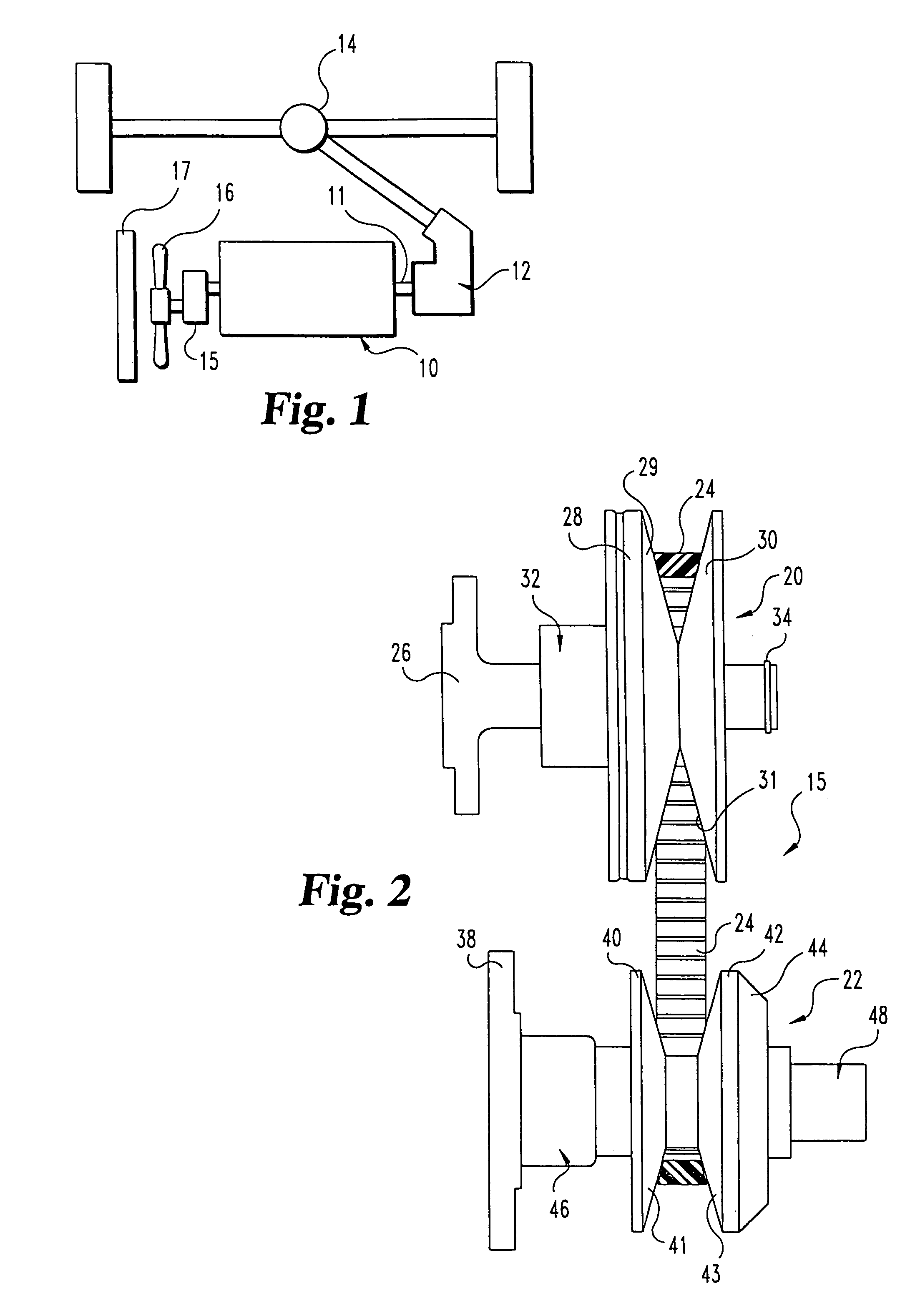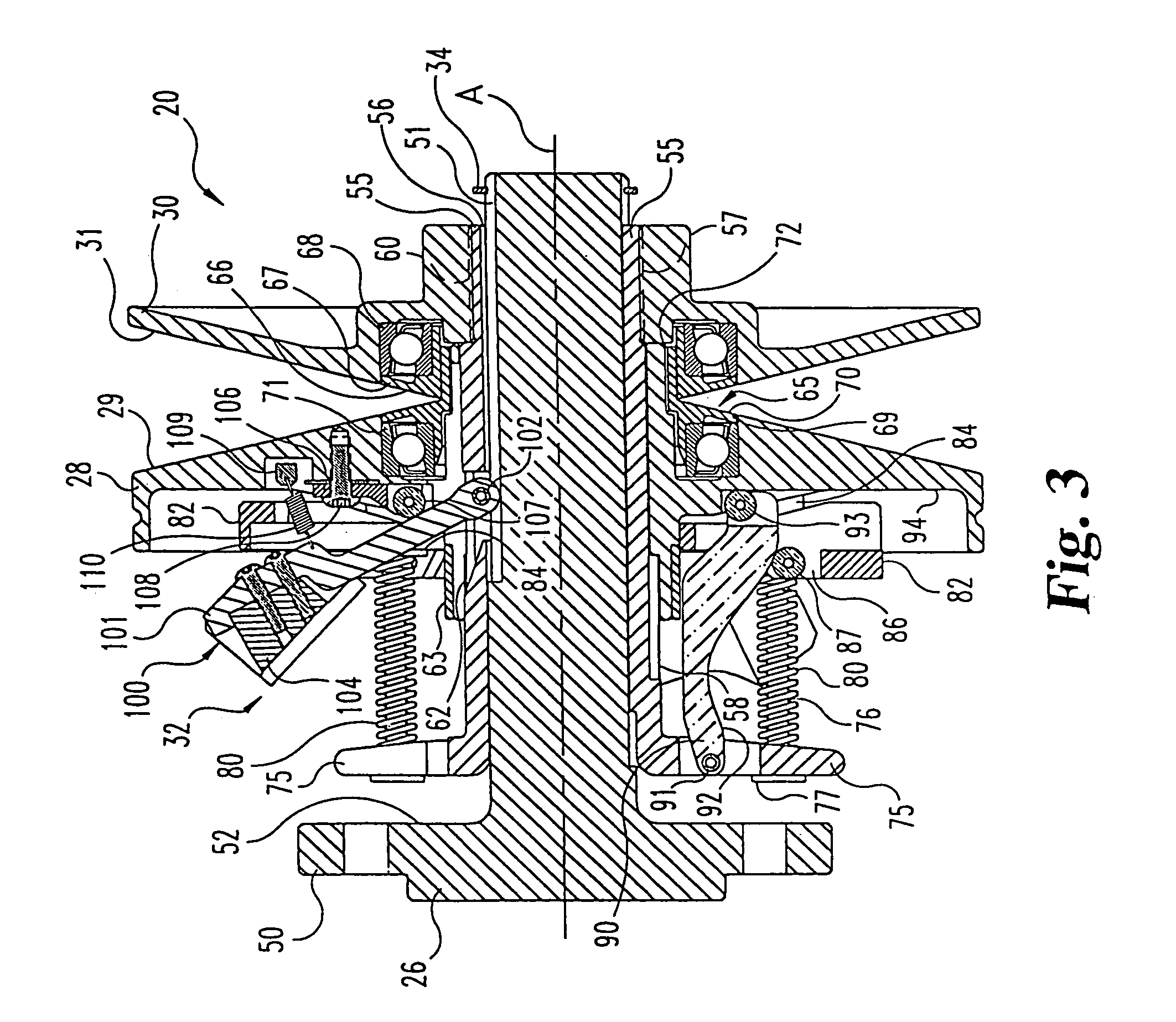Continuously variable belt drive system
a belt drive and continuous variable technology, applied in the direction of gearing, gearing elements, hoisting equipment, etc., can solve the problems of unreasonably high electrical power requirements, heavy trucks cannot use electric motors to drive cooling fans, and achieve the effect of increasing the axial force generated by centrifugal movement of the weight arm and adequate axial for
- Summary
- Abstract
- Description
- Claims
- Application Information
AI Technical Summary
Benefits of technology
Problems solved by technology
Method used
Image
Examples
Embodiment Construction
[0048]For the purposes of promoting an understanding of the principles of the invention, reference will now be made to the embodiments illustrated in the drawings and specific language will be used to describe the same. It will nevertheless be understood that no limitation of the scope of the invention is thereby intended. The invention includes any alternations and further modifications in the illustrated devices and described methods and further applications of the principles of the invention which would normally occur to one skilled in the art to which the invention relates.
[0049]The present invention concerns a continuously variable transmission, or transfer drive assembly, particularly suited for driving auxiliary devices in an automotive vehicle. Of course, the principles of the invention can be employed in a variety of applications where continuously or infinitely variable speed ratios are desired.
[0050]In general terms, the invention provides a driving member assembly that i...
PUM
 Login to View More
Login to View More Abstract
Description
Claims
Application Information
 Login to View More
Login to View More - R&D
- Intellectual Property
- Life Sciences
- Materials
- Tech Scout
- Unparalleled Data Quality
- Higher Quality Content
- 60% Fewer Hallucinations
Browse by: Latest US Patents, China's latest patents, Technical Efficacy Thesaurus, Application Domain, Technology Topic, Popular Technical Reports.
© 2025 PatSnap. All rights reserved.Legal|Privacy policy|Modern Slavery Act Transparency Statement|Sitemap|About US| Contact US: help@patsnap.com



